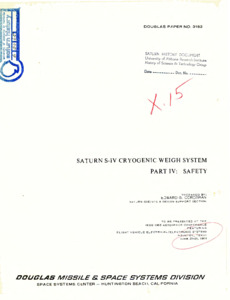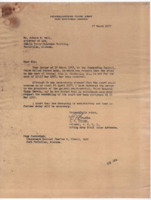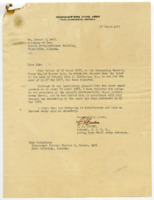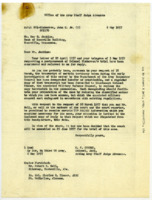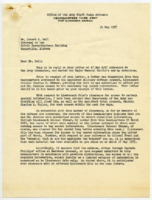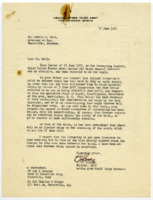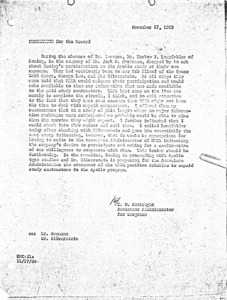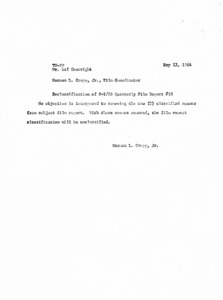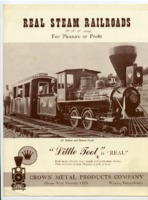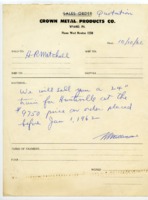
Browse Items (1976 total)
Sort by:
-
"Saturn S-IV cryogenic weigh system. Part IV : safety."
During cryogenic weigh system operation, hydrogen when combined with oxygen can create an unsafe condition. Therefore the concentration of the residual oxygen and hydrogen from leaks in the cryogenic weigh environmental bags must be known at all times during the cryogenic weigh. Hydrogen and oxygen detectors will provide the optimum method for maintaining safe conditions. Hydrogen properties and safe mixtures are reviewed. The method selected to analyze the oxygen content is discussed. The selection, development, and testing of a hydrogen detector system is examined. -
Letter to Robert K. Bell from C. F. Cordes.
Cordes writes in response to the defense counsel's request to the Commanding General, Third United States Army, of the trials dates May 13-17, 1957. He confirms that the trials dates have been postponed to the 15th in accordance with their request. -
Letter and drafts of letter to Robert K. Bell from Colonel C. F. Cordes.
This letter is in response to Bell's letter of March 22, 1957 to the Commanding General, Third United States Army. Cordes confirms the reception of Bell's request for the setting of the trial during the week of May 13-17, 1957 and states that Major General Crump Garvin has postponed it to May 15, 1957. -
Letter to Ray H. Jenkins from C. F. Cordes.
In response to Jenkin's request for a postponement of the trial of Colonel Nickerson, Cordes writes that the court will assemble on June 25, 1957 for the trial as the members of the court and court reporter have been granted top secret information neccesary for the case. -
Letter to Robert K. Bell from C. F. Cordes.
This letter was written in response to Bell's May 27, 1957 letter to the Commanding General, Third United States Army requesting top secret clearance for necessary information related to the Nickerson case. According to Cordes, Bell and Jenkins were granted access through Lt. Col. Charles Zimmer. -
Letter to Robert K. Bell from C. F. Cordes.
This letter was written in response to Bell's June 13, 1957 letter to the Commanding General, Third United States Army requesting the trial of Colonel Nickerson to be postponed until late July or early August. Cordes informs Bell that this request has been denied and the trial will proceed as originally planned on June 25, 1957 and states that no further delay could be permitted. -
"Memorandum for the record, from E. M. Cortright, Assistant Administrator for Programs."
Poor photocopy. Memorandum informing that members of the Boeing company are coming by for a study of their own. -
"Memorandum to Mr. Hal Seawright, TS-PP, from Norman L. Cropp, Jr., Film Coordinator. Declassification of S-I/IB quarterly film report #18."
Memorandum declassifying "Quarterly Film Report #18." -
"Real Steam Railroads" leaflet.
The leaflet provides the specifications and prices for different locomotive trains and their equipment.
